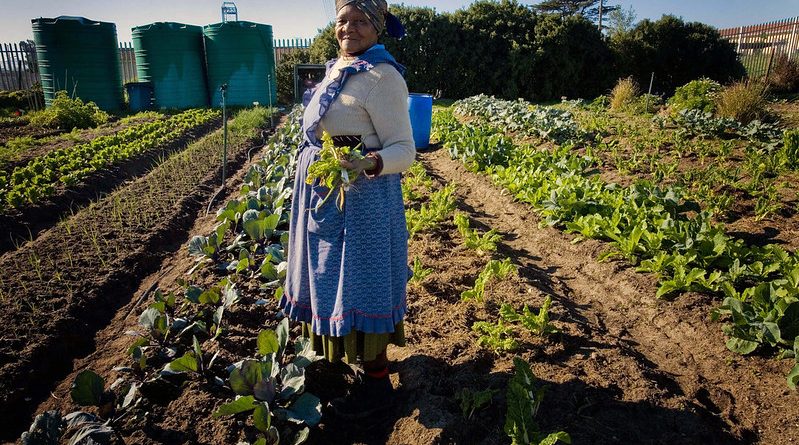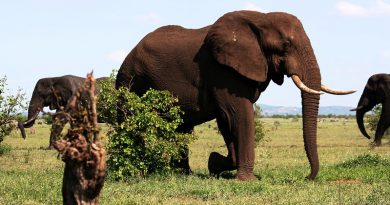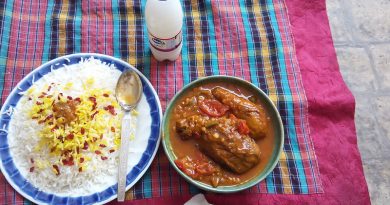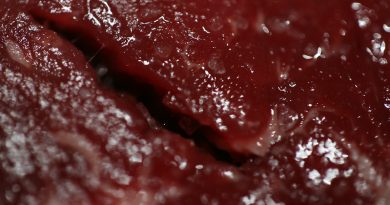The Food of South Africa
South Africa offers a bewildering variety of meat,some of the best wines in the world,and Its seafood is legendary
Although it offers some culinary ‘challenges’ it has one of the most diverse food cultures on the planet combining ancient African tradition and the latest food trends.
Its cuisine takes local ingredients and injects them with influences from across the globe, producing a cuisine worthy of the country’s name- the ‘Rainbow Nation’.
South Africa is blessed by its location at the junction of the Atlantic and the Indian Oceans.
CAPE TOWN
It is not hard to understand why Capetown became the first European settlement in South Africa.
It was first settled by the Portuguese in the 16thcentury. It was then developed by the Dutch East India Company as a supply station for Dutch ships sailing to East Africa, India, and the Far East. And it quickly became the economic and cultural hub of the Cape Colony.
A seafood rich coastline, fertile soil and a wonderful climate that together produce a wide range of agricultural products.
It was the search for food that shaped modern South Africa.
Spices drew the Dutch East India company to Indonesia in the mid 1600s, and the need for a half way stop for repairs and supplies made them establish a colony at the very tip of Africa- a giant ‘farm’ where they planted fruits and vegetables that would keep the ships’ crews healthy and free from diseases.
That farm changed the region forever. The different European super powers that ruled the country brought slaves from Malaysia, Indonesia, Madagascar, India. They all left behind their extraordinarily rich culinary traditions which mixed with the native foods created one of the most exciting cuisines in the continent.
THE CAPE MALAYS
When the Dutch settled the Cape, they brought with themslaves from Malaysia, Afirca, India, Madagascar and Sri Lanka to help them build their new colony.
The descendants of those slaves are known as ‘Cape Malays’, and their traditional foods have become staples of many South African homes.
The Cape Malay settled here in the 17th century. The founders of this community were the first to bring Islam to South Africa.
After abolition of slavery in the early 1830s, the Cape Malays moved to the Bo Kaap area to be near the mosques that had been built there. Today, the Muslim community is an integral part of the city.
THE CAPE COAST
With miles of coastline, Cape Town is a great place for seafood.
There are several harbours and fish markets along the coast such as the one at.Kallick Bay market. It’s small but here is where you come to buy direct from the fishermen who bring the catch around 1pm every day
Snoek is a fish that people in Cape Town can’t get enough of. They cook it in stews, they pickle it, they barbecue it and put it in fish and chips. This is one of the most iconic and simple Cape Town dishes- maybe a reminder of the British colonial era.
APARTHEID
The Nationalist Government in South Africa enacted Apartheid Laws in 1948 -who you can marry, where you can live, where you can walk,- everything was decided by racist laws and backed up by police, army and the secret service. The institutionalised racial discrimination was designed to maintain white minority in power and economically suppress the black and mixed race South Africans who lived in townships mainly in poverty.
Nelson Mandela led South Africa’s transition from white-minority rule in the 1990s, after 27 years in prison for his political activities. He never got tired of campaigning for freedom and equal rights, and used to drum up support in the townships. He was very much a man of the people. His favourite food was Umqhusho, a simple meal of samp and beans or maize and beans, one of South Africa’s staple foods.
TOWNSHIP FOOD
Guguletu is one of Cape Town’s townships or shanty settlements
Townships like this are home to millions of poor black people. They were created to separate blacks and coloured from the white population during the Apartheid years. A lot of the people living here are migrant workers that moved to Cape Town from the rural areas of the Eastern Cape.
Traditionally and even today the staples of the African table are maize and cheaps cut of meat. Among the most popular are:
Smileys or skaapkoppe – sheep’s heads
Pens – tripe or intestines
Runners – Chicken feet
Chakakatha – tomato sauce with meat
Umqhusho (samp and beans or maize and beans) and Mandela’s favourite food.
Maize (pap) – Pap is the African staple food and is made from ground maize. It’s eaten for breakfast or as a side dish during the day. Maize is the cornerstone of traditional foods, both rurally and in the urban centers.
TOWNSHIPS: SHEEBEEN & JAZZ
There is one more place that you have to visit when you come to a township, and that’s the shebeen. This is like the local pub and they are an important part of the social scene.
Originally, shebeens were most often located in townships, since under apartheid, indigenous Africans were barred from entering pubs or bars reserved for those of European descent.
They were traditionally run illegally by women who were called Shebeen Queens and it was a revival of the African tradition that assigned the role of alcohol brewing to women..
THE WINELANDS
Stellenbosch, is the wine capital of South Africa.And Franschhoek
was the first region after Cape Town to be settled in South Africa in the latter half of the 17th century.
The mountain ranges, and the soil create the perfect microclimate for vines, making South Africa one of the top 10 wine producers in the world.
The Cape served as a big farm for the Dutch who needed supplies for the ships en route to Asia. They were doing well with potatoes, carrots and watermelons. But there was one essential ingredient they didn’t manage to produce- wine
The Huguenots, who were fleeing religious persecution in France were the first to cultivate vines and then wine in South Africa.
PINOTAGE
Pinotage is South Africa’s signature wine, and also one of the most controversial wines on the market.
– Beyerskloof is South Africa’s top selling producer of Pinotage. They produce the most expensive Pinotage in the Market. And their farm has been in the family for 6 generations.
– There were four key factors in the advent of Pinotage: two grapes, a country and a bloke, Abraham Perold. In 1925 Perold cross-pollinated Pinot Noir with Cinsault (aka Hermitage) in Stellenbosch. The idea was to harness the flavour of the former to the robust growth of the latter. Ever since, Pinotage has – depending on your point of view – either offended or wowed palates the world over.
BLACK WINEMAKERS
In a Stellekaya winery ,Ntsiki Biyela and is the first female black winemaker in South Africa.
She is now one of South Africa’s few black winemakers in an occupation that has been dominated by white people for 350 years. There are only about 20 black winemakers in SA. Though apartheid has been swept away, SA is still a racially divided society. Ntsiki lives in ‘two worlds: the village where she speaks Zulu and eats pap, and the European style world.’ She says The European is all about the ‘me life’, while in the village, it’s all about the community.
Ntiski grew up in Zululand in a small village of huts and shacks. The only alcohol they drank there was homemade beer. She won a winemaking scholarship – she had never even tasted wine.
Her blends of merlot, cabernet sauvignon and pinotagehave won gold medals and four star ratings. She was named South Africa’s Woman Winemaker of the year in 2009.
South Africa may rank among the world’s top 10 wine producers, but the industry’s history has dismal chapters. Vineyards were tended by slaves, and even after emancipation, working conditions remained both horrendous and insidious. In the so called dop system, laborers were paid partly with a daily quotient of cheap wine. Dependence on alcohol was the boss’s method of control. Things have improved although still not enough.
The country has far more wine than wine drinkers, and more than half the production is exported. A large majority of South Africans are black and poor, and beer is their drink of choice.
Babylonstoren, is one of the best preserved farm yards in the Cape Dutch tradition.
BABYLOSTOREN GARDENS
In 1692, when the borders of the Cape Colony expanded after the arrival of French Huguenots, Governor Simon van der Stel granted this farm to the Pieter van der Byl. He planted the gardens and altered water courses to provide irrigation.
More than 300 years later, these gardens are still at the heart of the farm,
– The garden was inspired by the Company Gardens of the Cape, where for centuries ships would replenish with sweet water, vegetables and fruit at the halfway station between Europe and Asia. It also hales back to the mythical garden of Babylon.
– When the Dutch first got to South Africa they discovered a land rich in natural resources, but they also brought with them some key ingredients like sweet potato, pineapples, watermelons, pumpkins, cucumbers, radishes and citrus trees such as lemons and oranges.
: Spanning eight acres, the garden is formal in structure. Every one of the over 300 varieties of plants in the garden is edible or medicinal. The garden is divided into fifteen clusters spanning vegetable areas, berries, bees, indigenous plants, ducks and chickens and includes a prickly pear .
South Africans love sweet treats, and preserves are something not to be missed. The art of preserves was probably handed down by the Afrikaners’ French forebears, from the French confiture.
AFRIKANER CUISINE
Afrikaner cuisine is based on Dutch cuisine, with contributions from French and German immigrant communities with a large dollop of Cape Malay, and tempered by decades of trekking.
Milktarts and Green fig preserve are a must – steeped in syrup seasoned with cinnamon and dried ginger.
Meat is an important part of Akrikaner cuisine . Meat is often cooked on a barbecue known here as a brai .
Braai for South Africans is more than just barbecuing, it’s a social gathering where you meet, hang out with your friends, eat good food and enjoy some cold beers.
Meat is often dried too and consumed later as biltong
DURBAN
Durban, South Africa’s third largest city, is the continent’s busiest port. And until the 1970s, ‘it was white’ South Africa’s quintessential seaside playground. Then, the collapse of Apartheid saw a stream of Africans flood in from the rural areas.
But this city has always been home to the largest Indian community in South Africa.
INDIAN FOOD
In the 1860s Indian labourers were brought in from British India to work the sugar plantations. Traders, merchants and religious leaders followed and they all brought with them their zinging curries and spices.
Today, the area around Victoria, Queen and Grey Streets is the place to come for all things Indian. At the heart of it all is Victoria street market. Two highlights :
Victory Lounge in Grey street for its fantastic sweetmeats
The Little Gujurat in Left of Dadoo (Grey) into Prince Edward with great vegetarian food
One of the famous Indian delicacies in Durban is Bunny Chow. It was created for black caddies, known as bunnies, who were not allowed to use the crockery and cutlery at the exclusive, white only golf clubs in the Apartheid days.
A crusty loaf of bread is the famous Bunny Chow …. filled with the most delicious curry- easily eaten by hand .
The history, climate, and land of South Africa are reflected in the food cooked by the Indian community in Durban.
South Africans of Indian origin have retained the core culinary traits of their Asian motherland but have incorporated African ingredients and hospitality traditions.
In India, foods are very regionally specific but because the South African Indian people come from a diverse range of communities a collective fusion genre of Indian cooking has developed. There are also Zulu influences on the Indian food because Indian people and Zulu people lived and worked in close proximity in rural KwaZulu-Natal.
Indians here cook with traditional Zulu ingredients such as the fermented milk drink amasi, while relishes such as the township classic chakalaka show evidence of the incorporation of Indian spices.
GANDHI MUSEUM
One of Durban’s most famous Indian residents was Mahatma Gandhi. He lived in the Phoenix settlement for 21 years and it was here that he nurtured his passive resistance philosophy as an Indian expat lawyer in 1904.
Gandhi, a 23-year-old barrister, arrived in South Africa in May 1893, on a one-year assignment to assist an Indian merchant in a civil suit. He had shown little interest in politics, and had little experience in organising and leading people. Within days of his arrival, he was thrown off a train, denied hotel rooms and pushed off a sidewalk – all because of his colour. He saw the dispossession and oppression of the Africans and agreed to extend his stay and try to help improve the situation. It was during this time that he first developed his passive resistance.
THE MIDLANDS
The Kwazulu Natal’s Midlands is a picture perfect Valley full of rolling green hills, misty valleys and tree lined avenues lined with quaint, English style country inns, tea shops and craft shops. This area West of Pietermaritzburg was originally settled by English farmers. And it still feels ‘very English’ and twee with places with names such as ‘Piggly Wiggly’ and ‘Ugly Duckling’.




